Note: This post contains affiliate links. As a Skillshare Affiliate and Amazon Associate I get commissions for purchases/signups made through links in this post.
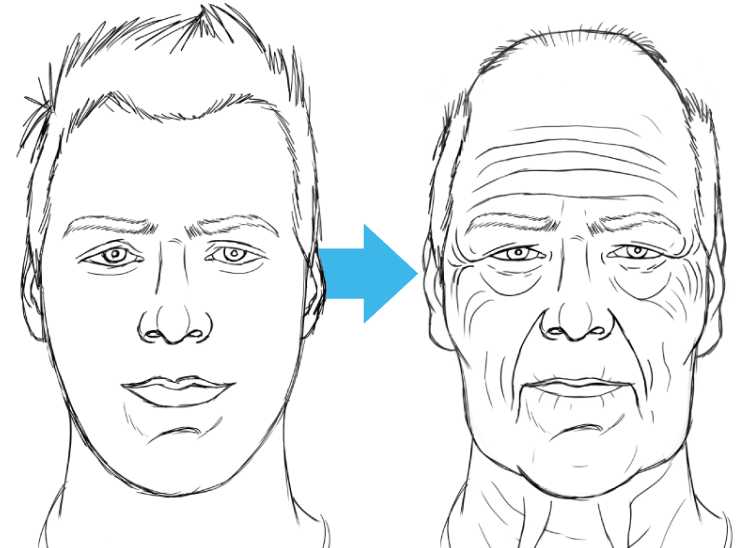
Sagging skin, wrinkles, aches and pains… aging isn’t fun.
But drawing aging people is! There are so many potential motifs: A portrait of a loving grandma, a wise old mage, …
In this guide you’ll learn:
- how wrinkles work
- how to draw old people’s faces
- lots of tips and tricks
Let’s roll!
Table of Contents
1. How To Draw Wrinkles On A Face
The first step to drawing wrinkles well is to know how they work. The large wrinkles on a face tend to follow a clear pattern.
Wrinkles on a face follow the shape of the bones and muscles that the skin wraps around:
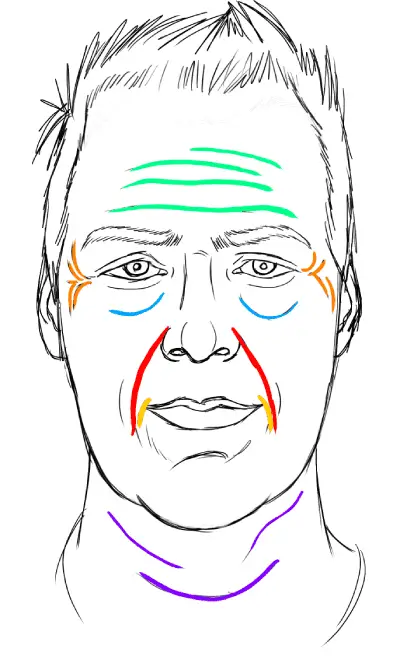
To draw wrinkles, you need to know these common skin folds:
- Forehead Lines: running horizontally along the forehead
- Tear Troughs: wrinkles running ovally below the eyes
- Crow’s Feet: coming out of the sides of the eyes and below the tear troughs; they run down the cheeks and up the sides of the head
- Nasolabial Folds: these run ovally around the nose and lips
- Marionette Lines: coming out of the sides of the mouth; these often merge with the nasolabial folds
- Neck Lines: these run (almost) horizontally around the neck
Seems complicated?
Don’t worry, next we’ll look at each step by step and at what age they appear.
If you need an in-depth course, check out Marco Bucci’s course Understanding and Painting the Head. He teaches you how to draw a head from the ground up.
You’ll learn how to paint all the features, and learn all about values, color and lighting.
You can do the course for free, if you do a free trial on Skillshare.
2. Drawing Faces Of Young People (20s)
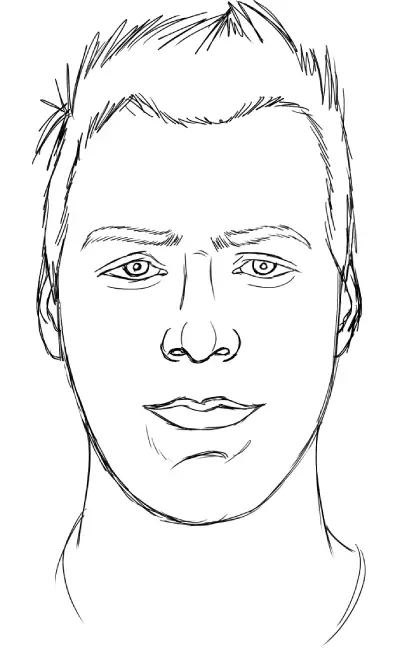
CHECK OUT: 5 Reasons Why You Can’t Draw Faces
This step may seem redundant, but we gotta start somewhere, right?
Obviously, people in their 20s aren’t littered with facial wrinkles. At that age, most people have pretty smooth skin.
Still, there are some wrinkles on the face.
The eyelids, which sit on the eyeballs, create wrinkles above and below the eye in most people.
You can draw these by drawing a line above and below the eye, following the shape of the eyes:
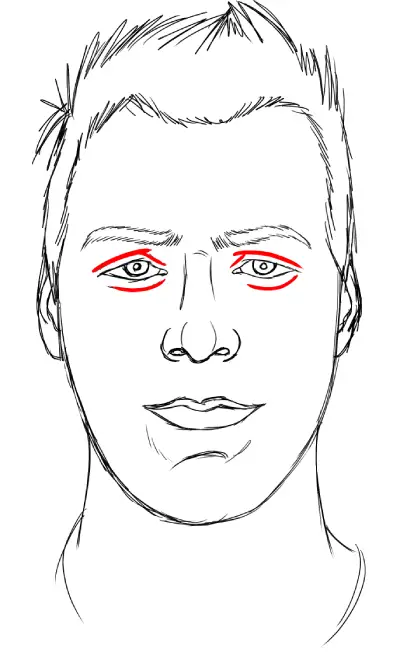
Some people can have a defined chin, like in my drawing here. There’s a fold below the lips:
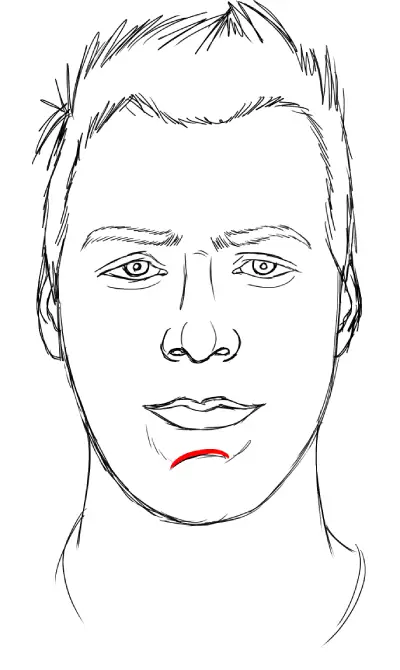
And that’s about it for young people.
Now, we’ll get to the interesting stuff.
CHECK OUT: Must-have Art Equipment I Recommend
3. How To Draw Middle-Aged Faces (30s to 40s)
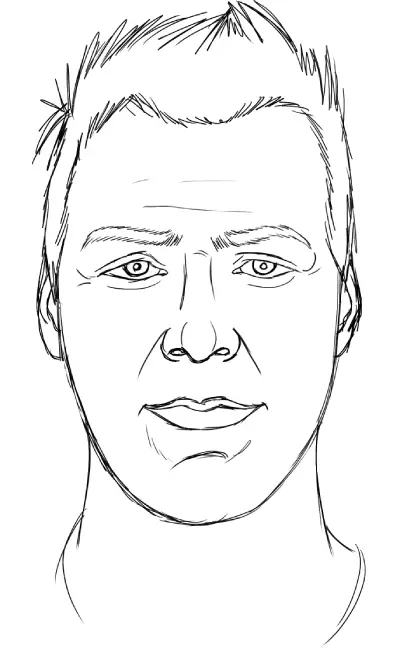
One of the first signs of aging are the Nasolabial Folds.
These tend to slowly appear in one’s 30s or 40s. These are one of the easiest ways to make someone appear old(er) in a drawing:
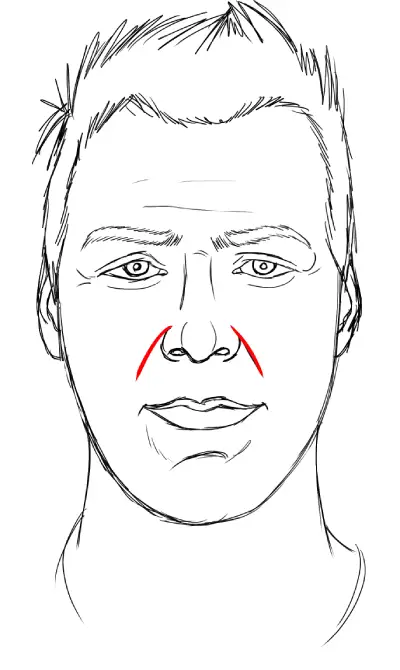
Another early sign of aging are emerging Crow’s Feet.
At first, these are low in number and aren’t that long:
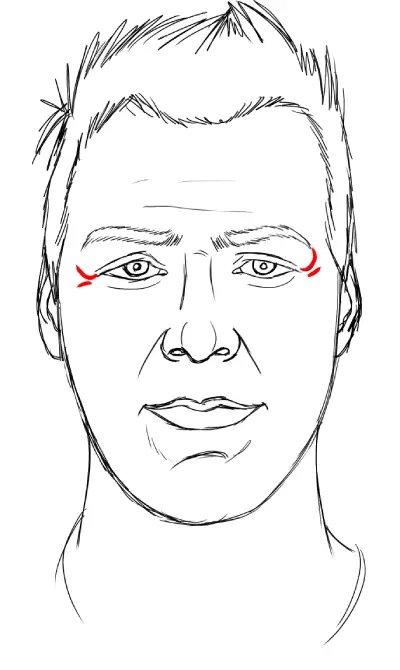
Forehead lines can also start to appear. Some people might have quite a few already, most people will just have some:

As you can see, wrinkles aren’t that much of an issue in the 30s and 40s yet. I hope that this is also the case for you! 🙂
4. Drawing Older People (50s to 60s)
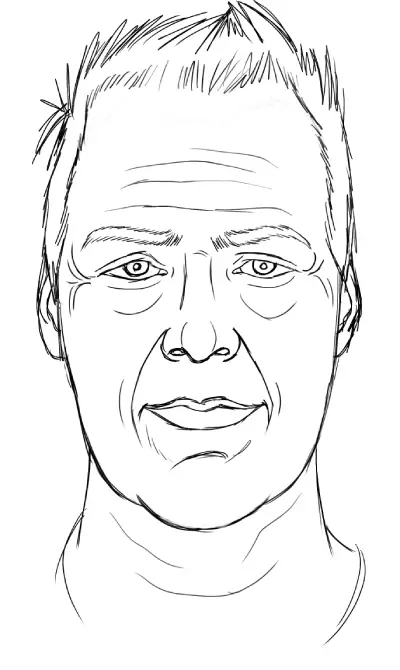
Now things start to get interesting. In the 50s and 60s the wrinkles on a face really start showing.
For many people, not all, the Tear Troughs might appear:
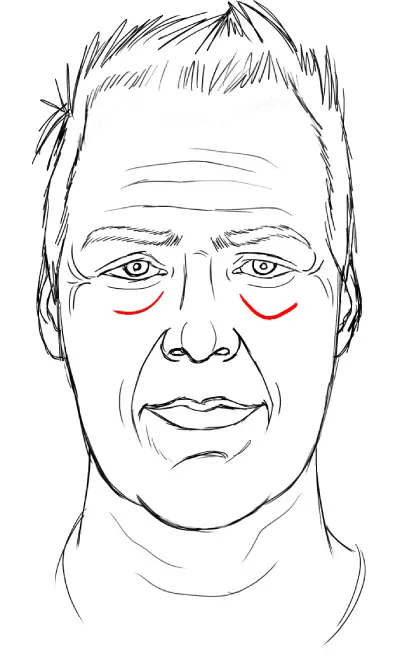
As the skin gets older, it often starts sagging a little. It’s especially conspicuous in the chin area:
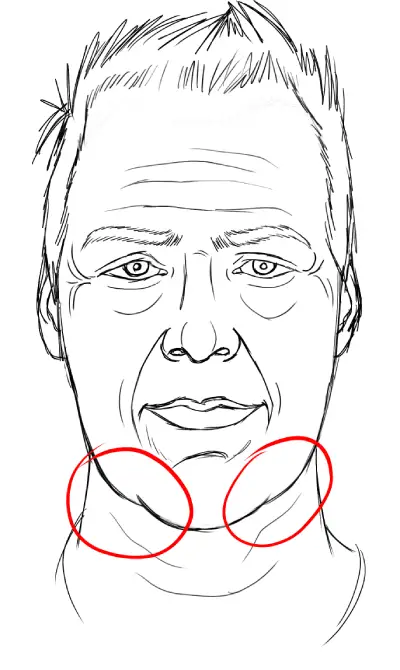
Moreover, for a lot of men the hairline starts receding:
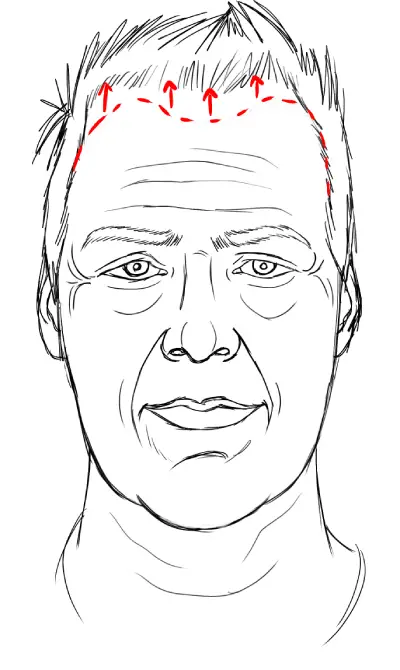
Otherwise, the same folds as before are prevalent – just more pronounced.
There are some more Forehead Lines:
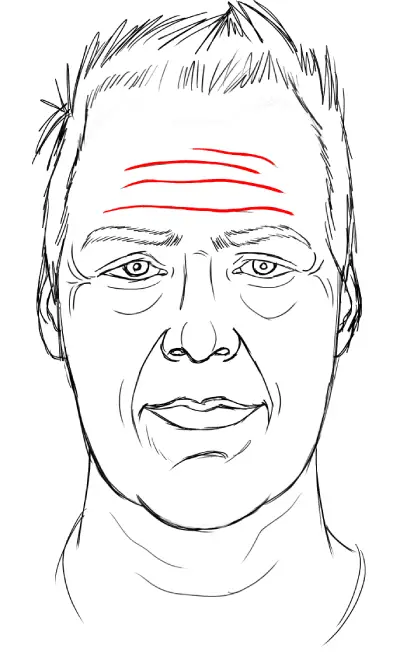
A few more Crow’s Feet appear and they get a little bit longer:
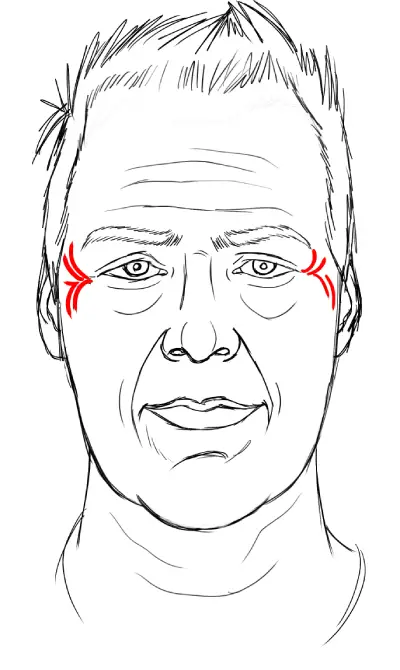
Also, the Nasolabial Folds get longer and deeper. Now they probably pass the lips:
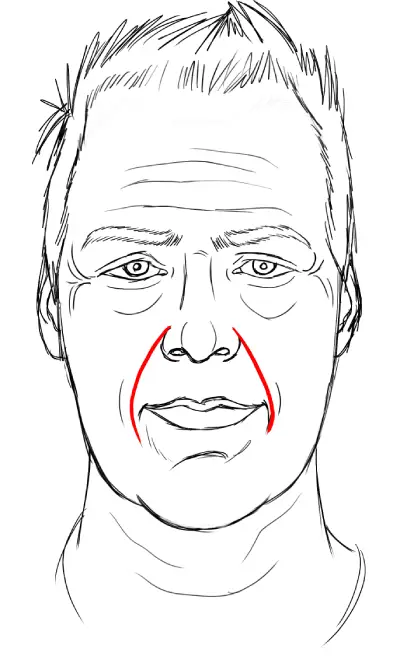
People in their 50s or 60s will by now probably have some Neck Lines, as well:
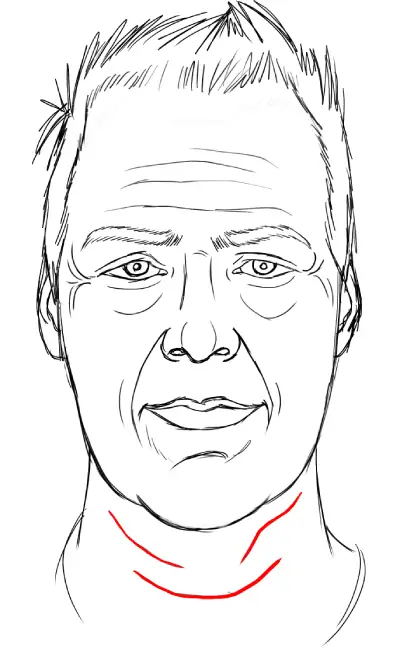
Improve Faster With My FREE e-Book!
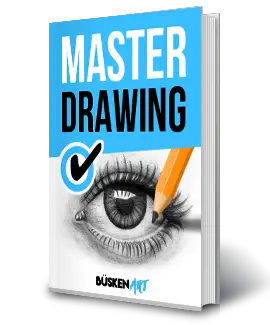
Learn how to MASTER drawing in 5 easy steps with my FREE PDF guide!
Discover a methodical way to learn drawing effectively!
5. How To Draw Very Old Faces (70s to 80s+)
Finally, our model will enter the last stage of aging. A lot happens here.
All in all, the recurring wrinkles will get longer. And there are way more of them:
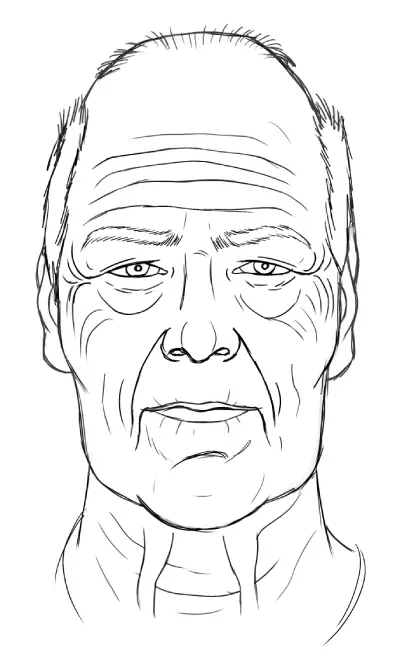
There are noticeably more and longer Forehead Lines, Crow’s Feet and Neck Lines – and some more little wrinkles all over the face.
Other striking changes are these:
Mostly for men, balding is a thing. On top of the head, the hair might be gone almost completely by now:
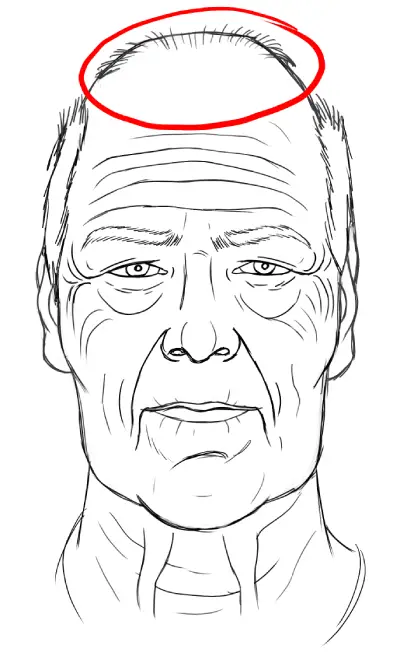
The eyes become smaller and the folds around them might get less pronounced and more scattered:
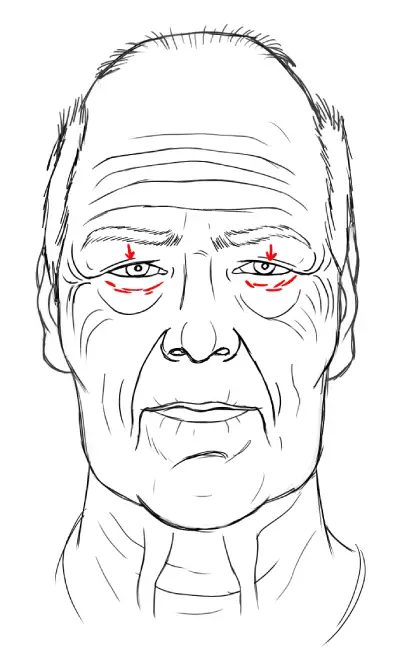
The ears get longer. Ears tend to grow quite a lot over the years:
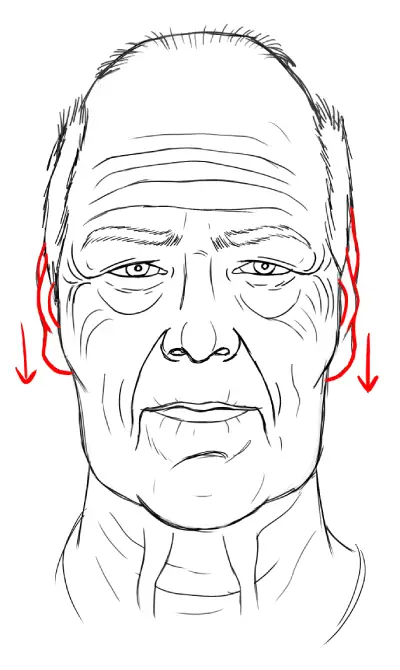
The lips get smaller, too – some people seem to have none at all anymore. Furthermore, little vertical wrinkles start appearing above and below the lips:
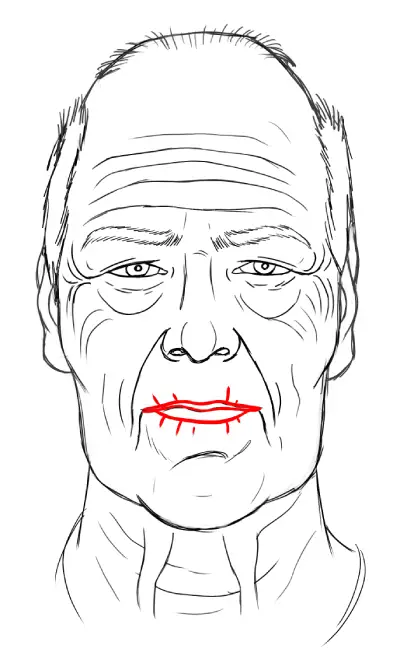
Overall, the skin starts sagging a lot more, especially visible around the chin. The cheekbones are more prevalent, too:
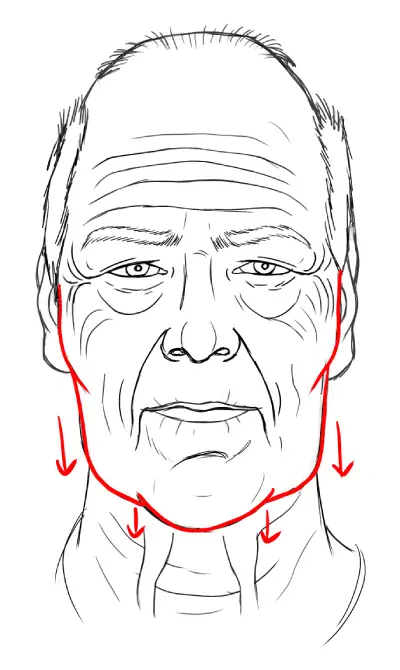
The skin is so loose by now, that it often starts „hanging around“ the neck:
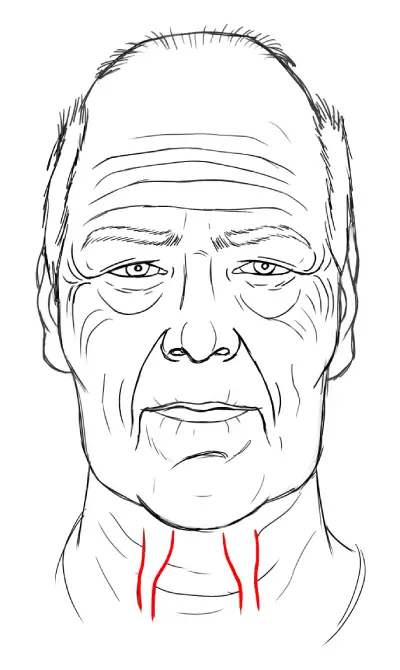
6. The Next Step
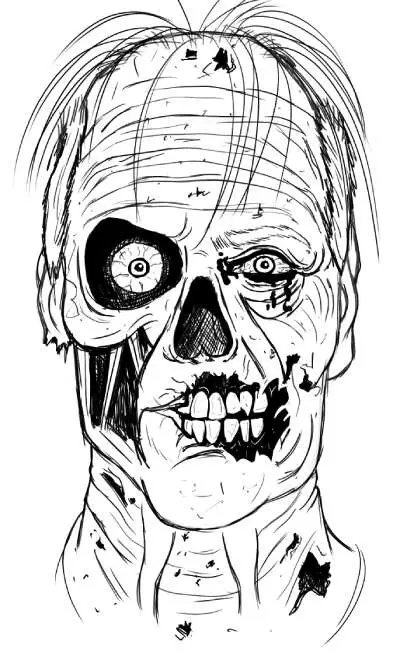
Didn’t see that one coming, did you?
For what it’s worth, here’s an awesome in-depth video of master David Finch drawing a zombie:
Have fun!
7. Further Reading
Check out these other articles on the topic of drawing faces:
- Why Can’t I Draw Faces? These Are The 5 Reasons Why!
- Side Profile Drawing Of A Head: Beginner Guide [Step By Step]
- Where Are The Shadows On A Face? [And How To Draw Them]
- The Asaro Head: How To Master The Planes Of The Head
- The Best Head Drawing Methods: Loomis vs Reilly vs Asaro
READ NEXT:
Where Are The Shadows On A Face? [And How To Draw Them]

Thx
Your’re welcome!
thank you!! this was extremely helpful!!!! 🙂
You’re welcome! I’m glad you like it. 🙂
That is very informative. Thank you!8>
No problem, Jill. Thanks for the compliment! 🙂